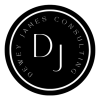Organizations-Measurement
Measurement has a significant part to play in organizational components such as; leadership, management, motivation, performance, and quality. According to Michell (1999) Measurement is the determination or estimation of ratios of quantities. Understanding that “ratio” refers to the relationship between two quantities, we can easily see how measurement will prove extremely important in the aforementioned areas. The following breakdown discusses how measurement relates to the two out of the five areas previously introduced, specifically, leadership and management:

My analysis of measurement and some organizational components
Leadership – Steyrer (2008) expresses the idea that individuals displaying leadership skills embodies traits of dedication, decisiveness, security, and other charismatic qualities, while remaining goal oriented. Although I have not yet come across a standard scale of measurement for these leadership qualities, people still set their own quantitative identifiers for relating one individual’s leadership competence, to another.
Management – If we think of management as the coordination of resources in order to achieve a specific goal, then it is understandable that management would require methods of identifying the best course of action necessary to achieve maximum efficiency and ultimately achieve the goal. These identification methods would require measurements in order to identify which course of action yields the best results. Consider Edward Deming, Joseph Juran, and Philip Crosby, all who have been considered leaders in the “quality management” movement, these pioneers went on to develop total quality management (TQM) which utilizes measurements to achieve improved work processes so that an organization can excel on all dimensions of product and service (Chase, Jocbs, and Aculano, 2004; davenport, 1993).
Motivation, performance and quality are all aspects of leadership and management, which requires individuals to observe, evaluate, and improve upon current actions. It is a learning process which requires some method of quantifying observations, and relating the observations of current practices to alternative options. This is in itself measurement at work, regardless of the learning process’ adaptive or proactive nature. The adaptive learning consists of changes made in reaction to changes in the environment, and proactive learning consists of changes that arise due to strategies from within the firm (Argyris & Schön, 1978; Senge, 1990).
References
Argyris, C. & Schön, D. (1978): Organizational Learning. Reading, MA: Addison-Wesley.
Chase, R. B, Jacobs, R., and Aquilano, N.J. (2004). Operations Management for Competitive Advantage, NY, NY, McGraw-Hill: Irwin, 10th edition.
Davenport, T.H. (1993). Process Innovation, HarvardBusinessSchool Press, Boston, MA.
Michell, J. (1999). Measurement in psychology: a critical history of a methodological concept. New York: Cambridge University Press.
Steyrer, J. (2008). Stigma and Charisma and the Narcissistic Personality. In B. Avolio and F. Yammarino (Eds.) Transformational and charismatic leadership: The road ahead. (pp.375-384). Bingley, UK: Emerald Group Publishing.
Dewey M. James, MIS is the author of this post.


